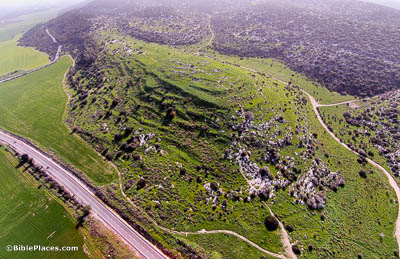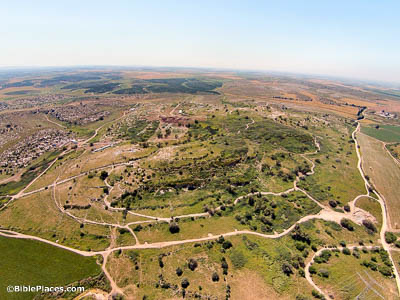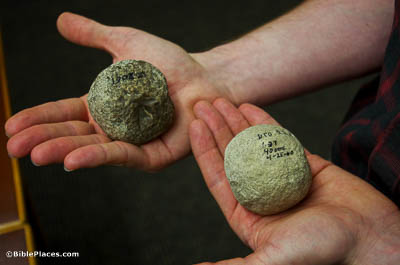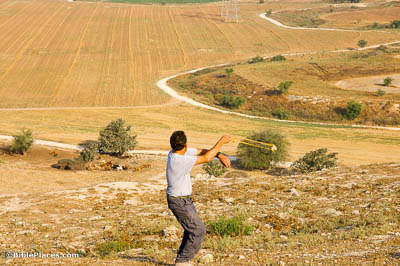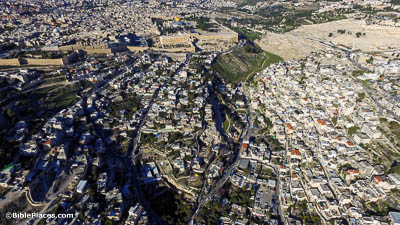The Philistines . . . were gathered together at Socoh, which belongs to Judah (17:1).
Socoh of the Shephelah is identified with Khirbet Abbad near Khirbet Shuweikeh, which preserves the ancient toponym. Khirbet Abbad has remains from the Middle Bronze, Late Bronze, and Iron Age II (roughly 2200–1200 BC, 1000–586 BC). Socoh held a strategic position in guarding access to Judah’s hill country. If Israel lost Socoh to the Philistines, they would have trouble resisting their entrance up the routes to Bethlehem and Hebron.
